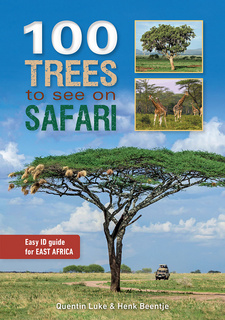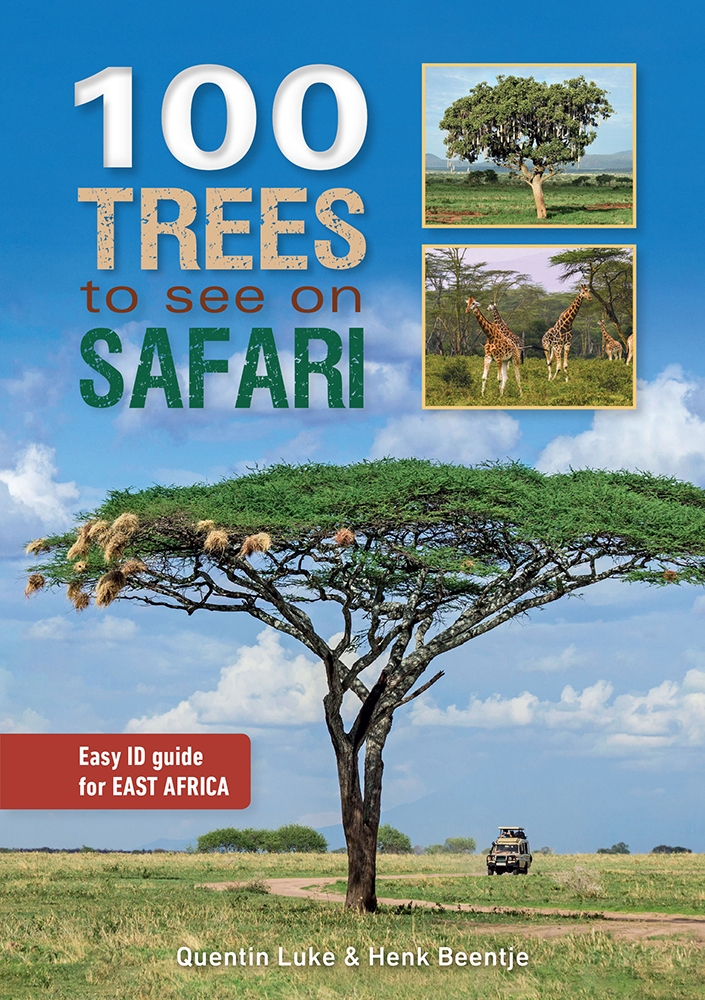100 Trees to See on Safari in East Africa, by Quentin Luke and Henk Beentje

100 Trees to See on Safari in East Africa, by Quentin Luke and Henk Beentje. Penguin Random House South Africa. Imprint: Struik Nature. Cape Town, South Africa 2020. ISBN 9781775845492 / ISBN 978-1-77-584549-2
Although 100 Trees to See on Safari in East Africa by Quentin Luke and Henk Beentje features only an overview of a much broader topic, it will provide readers with a taste of East Africa's rich tree flora and, it is hoped, an appetite for more!
What is a tree?
Everyone knows what a tree is but individual definitions may vary. Some people regard a tree as being any plant capable of providing shade in which one can sit. In the Kew plant glossary, a tree is more scientifically defined as a vperennial woody plant with secondary thickening, with a clear main trunk'. In general, what differentiates a tree from a shrub is the tree's single main trunk, plus some height, usually at least 2-3m above ground level.
A note on common and scientific names
Trees are listed in this book under their locally common name, coupled always with their scientific (Latin) name, as well as a selection of alternative and local common names. Botanical common names, in particular, can vary from place to place, or refer to a number of different species: the Swahili xMgunga', for instance, is used for a whole range of Acacia tree species; xMsokote' can mean seven different Grewia tree species; and vMtengeji' can stand for Canthium glaucum, Catunaregam spinosa, Psydra recurvifolia, Pyrostria phyllanthoidea, Ryfigynia celastroides or Vangueria loranthifolia. Scientific names, however, are permanently linked to just a single species, and are recognised universally.
How to use this guide
The trees in this guide have been arranged by habitat (coast, dry bushland, etc.). Each of the seven habitats forms a section of the book and is colour-coded for ease of use. Furthermore, within each section the trees are arranged in ascending order of the altitude at which they habitually grow, with the sequence determined by the highest occurrence of each species.
Habitats
East Africa is rich in plant and animal diversity, precisely because its habitats are so varied.This is as a result of factors such as varying altitude, rainfall regimes, soil types and landforms.This guide has been organised according to the region's main habitats: coast, dry bushland, savanna/ woodland, riverine/wetter habitats, dry forest, moist forest and high mountain. The habitat map (right), although much simplified for quick reference, aims to show where the various vegetation types occur.
Coast (Altitude: 0-2,350m)
Although the coastal strip is narrow, the habitat embraces conditions that range from coastal swamps to adjacent wet forests, which are kept moist by the sea breezes and the monsoons.The monsoon comes twice a year: the long rains arrive in March lasting through May, and the short rains occur between October and November. Where the forest survives it is lush and rich in species. At the interface between sea and land, mangroves reign supreme.This is a harsh environment where the trees' roots have to cope with alternating fresh and salty water, and where leaves and stems have to tolerate salt spray. These hardy trees are not only a refuge for birds, they also provide shelter and brood chambers for fish and crustaceans. [...]
Quentin Luke is a botanical consultant and senior research associate at the East African Herbarium, National Museums of Kenya, in Nairobi. He is also Chair of the IUCN-SSC Eastern African Red List Authority. An expert on tropical African botany, he has worked in 12 African countries.
Henk Beentje worked as botanist at the National Museums of Kenya for five years, and at the Royal Botanic Gardens, Kew, for 25. He is the author of Kenya Trees, Shrubs and Lianas, co-author of Palms of Madagascar, the editor of Flora of Tropical East Africa, and author and co-author of several field guides.
This is an excerpt from 100 Trees to See on Safari in East Africa, by Quentin Luke and Henk Beentje.
Title: 100 Trees to See on Safari in East Africa
Subtitle: Easy ID guide for East Africa
Authors: Quentin Luke; Henk Beentje
Publisher: Penguin Random House South Africa
Imprint: Struik Nature
Cape Town, South Africa 2020
ISBN 9781775845492 / ISBN 978-1-77-584549-2
Softcover, 15 x 21 cm, 144 pages, throughout colour photos
Luke, Quentin und Beentje, Henk im Namibiana-Buchangebot
100 Trees to See on Safari in East Africa
100 Trees to See on Safari in East Africa shows the most common and noteworthy of the more than 2200 East African tree species.

